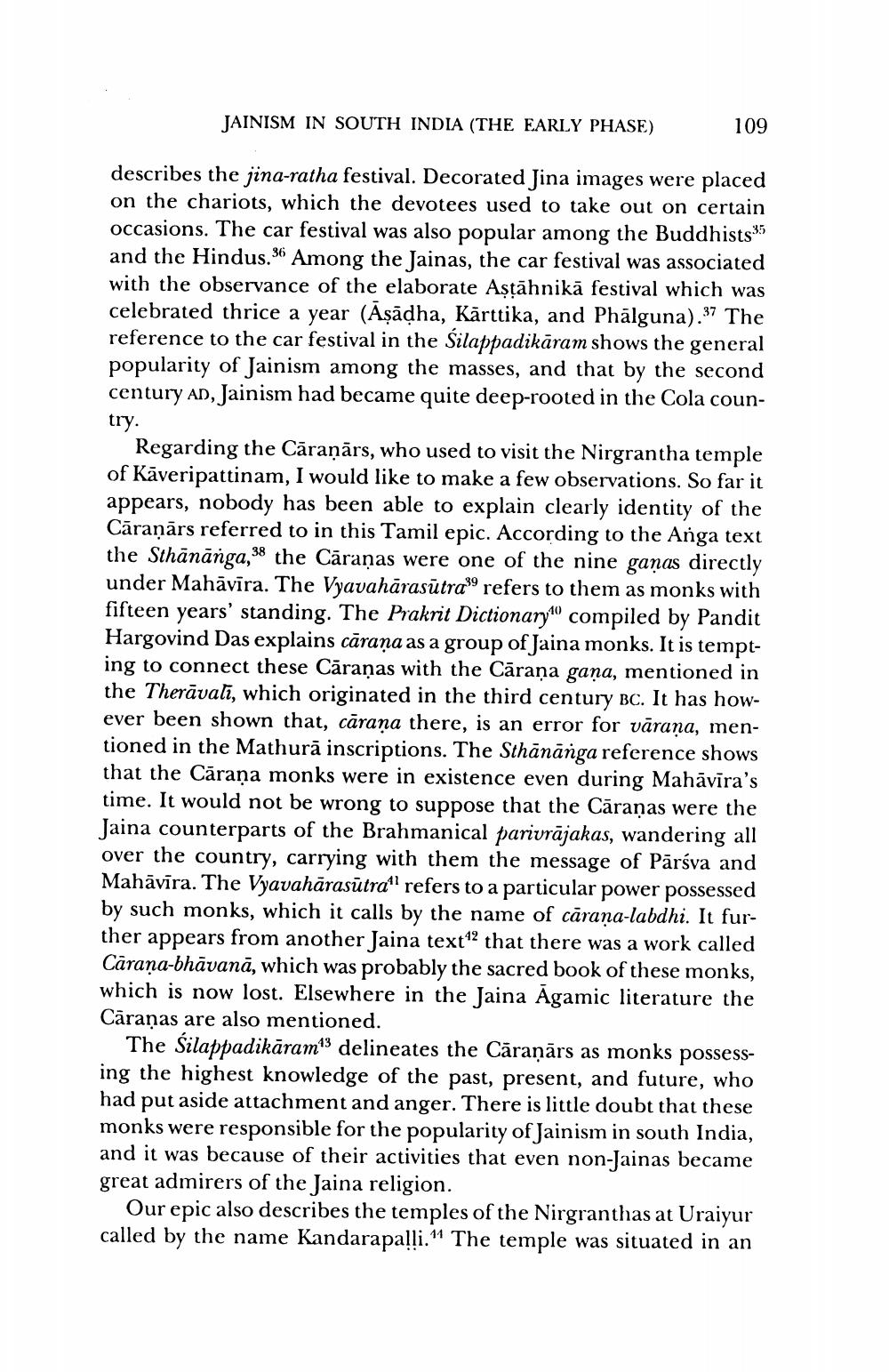________________
JAINISM IN SOUTH INDIA (THE EARLY PHASE)
109
describes the jina-ratha festival. Decorated Jina images were placed on the chariots, which the devotees used to take out on certain occasions. The car festival was also popular among the Buddhists and the Hindus.34 Among the Jainas, the car festival was associated with the observance of the elaborate Astāhnikā festival which was celebrated thrice a year (Aşadha, Kärttika, and Phālguna).37 The reference to the car festival in the Silappadikāram shows the general popularity of Jainism among the masses, and that by the second century an, Jainism had became quite deep-rooted in the Cola country.
Regarding the Cāraṇārs, who used to visit the Nirgrantha temple of Kāveripattinam, I would like to make a few observations. So far it appears, nobody has been able to explain clearly identity of the Cāranārs referred to in this Tamil epic. According to the Anga text the Sthānānga, 38 the Cāraṇas were one of the nine ganas directly under Mahāvīra. The Vyavahārasūtrarefers to them as monks with fifteen years' standing. The Prakrit Dictionary10 compiled by Pandit Hargovind Das explains cāraña as a group of Jaina monks. It is tempting to connect these Cāraṇas with the Cāraņa gaña, mentioned in the Therāvali, which originated in the third century BC. It has however been shown that, carana there, is an error for vārana, mentioned in the Mathurā inscriptions. The Sthānānga reference shows that the Cāraṇa monks were in existence even during Mahāvīra's time. It would not be wrong to suppose that the Cāraṇas were the Jaina counterparts of the Brahmanical parivrājakas, wandering all over the country, carrying with them the message of Pārsva and Mahāvīra. The Vyavahārasūtra" refers to a particular power possessed by such monks, which it calls by the name of carana-labdhi. It further appears from another Jaina text^2 that there was a work called Cāraṇa-bhāvanā, which was probably the sacred book of these monks, which is now lost. Elsewhere in the Jaina Agamic literature the Cāraņas are also mentioned.
The Silappadikāramo delineates the Cāraṇārs as monks possessing the highest knowledge of the past, present, and future, who had put aside attachment and anger. There is little doubt that these monks were responsible for the popularity of Jainism in south India, and it was because of their activities that even non-Jainas became great admirers of the Jaina religion.
Our epic also describes the temples of the Nirgranthas at Uraiyur called by the name Kandarapalli.“ The temple was situated in an




